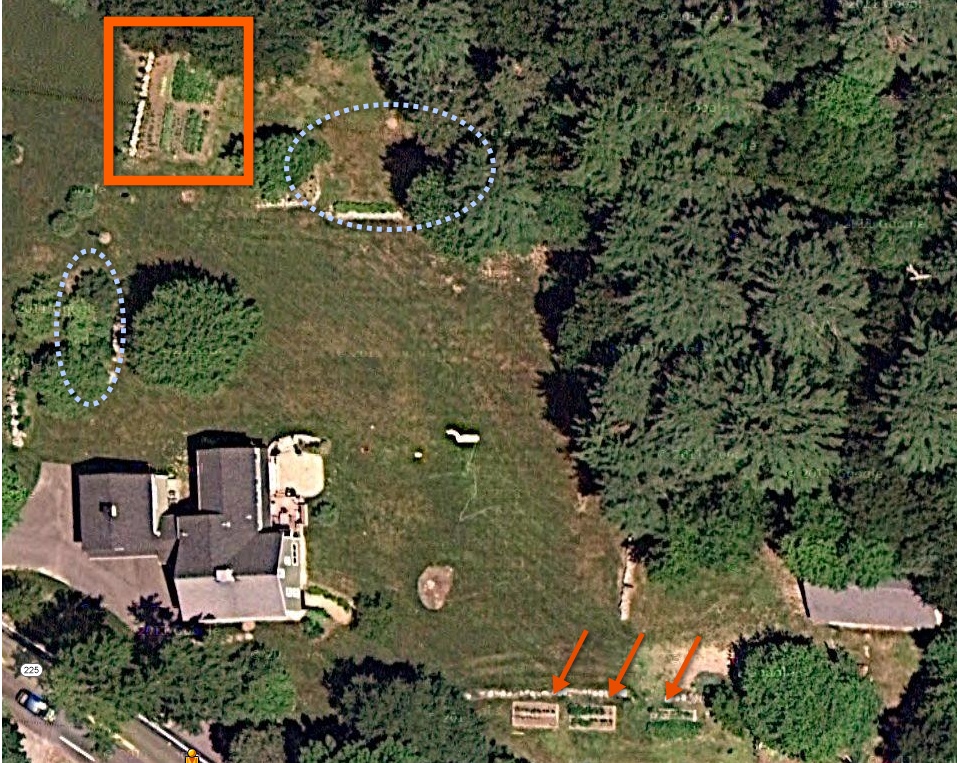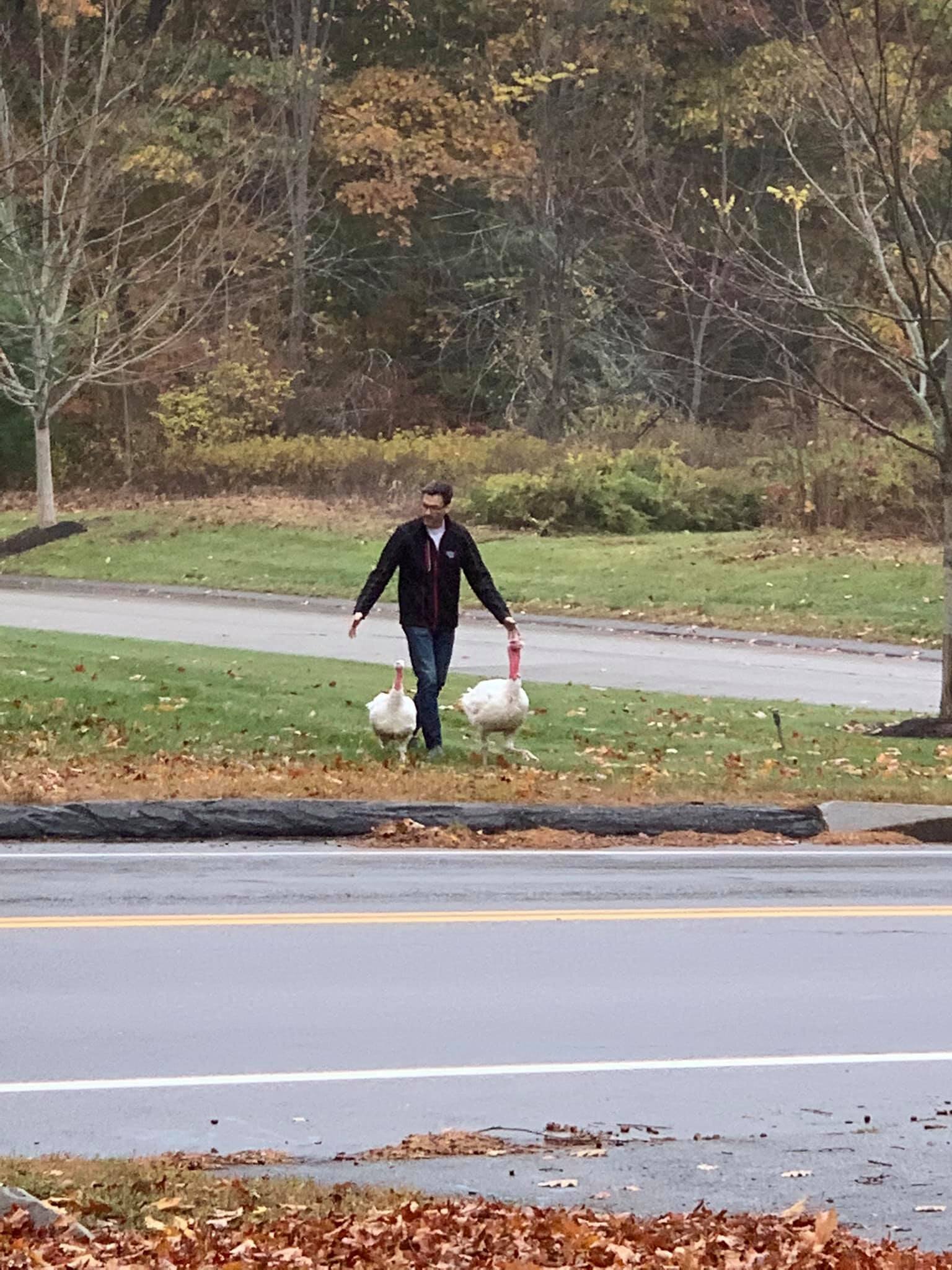Dreaming green
/A New England spring - even in a mild winter like this one - can lead to some frustrating weeks of anticipation. Starting just after Christmas, the seed catalogs begin arriving, filled with tantalizing descriptions of vegetables and fruit that makes you want to break out your hoe and fertilizer.
However, less than 10 days ago, this was the state of my garden:

See those tall, bare stalks? Those are the remains of nero di toscana kale (black Tuscan kale) that I had anticipated eating well into the winter, given its hearty resistance to frosts. It showed much less hearty resistance to the neighborhood deer, however, who found a free feast in the remains of my garden just after Thanksgiving. Damn them.
Thankfully, this snow retreated fairly quickly, like all the others this winter. As I watched the ground start to re-appear, the Critter & I broke out the spreadsheets and began plotting what we would be planting for this summer's harvest.
This will be our fourth summer of 'serious' gardening, and each year, we've learned a little bit of what works up here in our Massachusetts plot and what doesn't. We combine that with what we like and don't like in terms of produce, and factor in how much we think my Bride will let us get away with planting. (the most iron-clad gardening rule in our house right now is no more than one row of collard greens shall be planted. I love them, and they are among the most bountiful and pest-resistant of crops, meaning that you're going to end up with a ridiculous amount of collards with anything more than 2 or 3 plants.)
I've started keeping better records of what I've planted each year - this year, I intend to keep track of when I planted each crop also, and when I started harvesting from it, as this should arm me with better information for the future.
Our garden is divided into two distinct sections. Thanks to the Google space program, you can see them from overhead here:

This was captured early last summer - I can almost tell the date by what crops I see in bloom.
The three red arrows toward the bottom center point to our three raised beds, each 8' x 16' in area. (click here to see how we put them together). The red box at the top left encloses our more traditional, in-ground garden, which is probably somewhere around 30' x 50' or a little more. All told, this gives me just at 2000' square feet of garden space. (Note: the two blue dotted circles indicate where we planted the blueberry bushes, apple and quince trees (top) and where our two Concord grape vines grow on their arbor (left). There are also a few peach trees scattered about along the edges). For the curious, our ~25 hens live over in the bottom right corner below the barn. Their coop is mostly hidden from above by the oak tree in full leaf there.
Again this year, the traditional bed will probably be extended another 8 or 10 feet in width, to accomodate 2 or three more rows of vegetables. I've been trained the hard way not to overcrowd most things - the bare earth in the springtime just seems to beg for more seeds, but you end up with healthier crops and better harvest if you give every plant sufficient breathing room. We're fortunate to have plenty of room to play around with, and I'm not really going for the absolute maximum yield per inch of space. (for those that are, may I recommend Square Foot Gardening - which probably has some good tips for practically any gardener).
In the end, I try and create a blend of crops that give us something to harvest for the maximum amount of time - starting early with cold-tolerant greens (arugula, spinach, kale), then moving into peas and beans that sprout early, as well as broccoli and cabbage, and then into the more full-summer crops like cucumbers, tomatoes and zucchini. I always have a part of the garden set aside for fall squash and other pumpkins - I love them, but they do take up a large amount of space for the yield, with sprawling vines and large, shadowy leaves. This will also mark the 4th summer I've attempted to grow corn. I've lost it to scorching heat once, and to marauding raccoons twice. I have some new ideas on ways to defeat these pests that I'm going to test out this year. Probably to their amusement and my frustration. But what is gardening, if not a test of wills and tenacity?
After much consultation, planning and revision, here is our final list for the 2012 garden:
- Radish - I always plant French Breakfast varietals. They sprout overnight, and you can harvest in 4 weeks. They're the closest thing you can get to instant gratification in the garden.
- Zucchini (a few go a long way. On the other hand, we love zucchini, and it freezes well. So I'm never really worried about 'too many')
- Corn - Butter & Sugar hybrid. Damn the raccoons. They won't discourage me so easily.
- Carrot - This one is always request by the kids. They like the joy of digging up the big, orange treasures.
- Spinach - Every year, I've doubled the amount I plant. We love it.
- Collards - Every year, I've halved the amount I plant. For the sake of my marriage.
- Squash (Acorn, Butternut, Hubbard) - Don't know Hubbard? You should.
- Squash (Pumpkin) - I'll just plant one or two of these in a corner for the kids.
- Watermelon (same as the pumpkin - given our northern clime, these are pretty much not worth the effort in terms of yield, but the kids love to pick them when we finally get one or two in the late summer)
- Rhubarb - This is a new one for me. I think it takes about a year to crop, so it's more about future pies than anything.
- Arugula - one of my favorite salad greens. Crops pretty much all summer.
- Potato - Yukon gold only - it's the perfect potato
- Kale - nero di toscana
- Lettuce - Butter & Bib. Not a lot of either.
- Cucumbers - medium sized, for pickling
- Cucumbers - longer, for fresh eating
- Broccoli - purple sprouting & 'traditional' packard
- Peas - Super Sugar Snap - great fresh, and also good shelled.
- Green beans - Kentucky Wonder pole beans, reliable and plentiful harvest.
- Cabbage - savoy only. I plant 3 or 4 in "spare" spots in the garden as filler.
- Onions - red & yellow - from sets (tiny onions) rather than seeds
- Tomatoes - the last two years, I've had >20 plants each. Mostly, I opt for the bigger heirloom varieties, with a couple/three cherry-types for fun. Note: I always buy seedlings from local suppliers. This is in part because my luck at growing from seed and transplanting into the garden myself is terrible
I also plant a few herbs, mostly in pots towards the sides of the garden:
- Basil, Sage, Thyme, Oregano & Rosemary
About the only thing left off this list are the strawberries (planted in hanging baskets on the patio) and peppers, which I try every year from seedlings, with crap luck. Peppers need more warm sunshine than we're likely to get most summers, so my garden tends to be greens-heavy.
Other than adding a fruit tree or two (I've got to replace one apple devastated by deer last fall) and maybe a couple of chestnut saplings, that should just about do it for us this year. I've been trying to figure out how to optimize what plant to put next to which a bit better this year (I planted my beans next to the corn last year, leading to entanglement - some was good. too much was bad), and running out to test the soil warmth every few days. Most of the crops above really can't be planted until the end of April or even May. But with the soil starting to show through a little earlier this year, I can feel my restlessness to break out the hoe and marking stakes start to rise.
Finally, this weekend, I sacrificed about five bucks worth of seed to an early planting of spinach and arugula, unable to resist getting an early start on things.
Damn the risks of a Yankee spring snowfall - I live on the edge. Especially when the reward is so very, very delicious.







